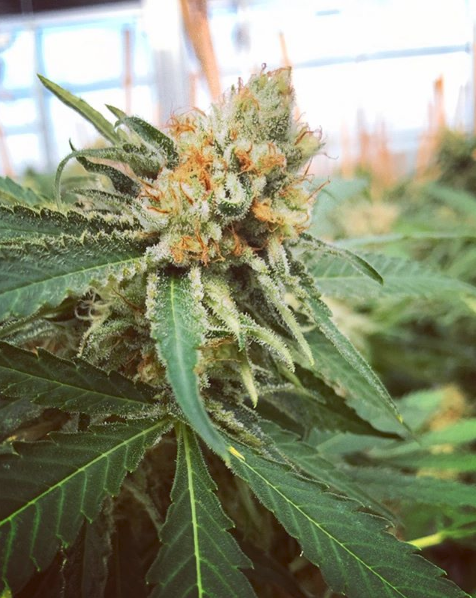 Cannabis has been cultivated for thousands of years, yet there is still debate about the properties and effects of certain strains. Have you ever wondered why some types of marijuana induce total body relaxation while others stimulate mental clarity and improve mood? It all comes down to the type of cannabis plant. Both Cannabis sativa and Cannabis indica are psychoactive varieties of the plant, but each has a unique structure, resin production, flavor profile, and chemical make-up.
Cannabis has been cultivated for thousands of years, yet there is still debate about the properties and effects of certain strains. Have you ever wondered why some types of marijuana induce total body relaxation while others stimulate mental clarity and improve mood? It all comes down to the type of cannabis plant. Both Cannabis sativa and Cannabis indica are psychoactive varieties of the plant, but each has a unique structure, resin production, flavor profile, and chemical make-up.
What does this mean for the medical marijuana patient who is looking for specific therapeutic benefits? By gaining a general understanding of Sativa vs Indica, treatments can be customized to achieve desired physical and cerebral effects. Let’s take a look at key Sativa vs Indica differences:
Sativa vs Indica chart
Sativa and Indica contain dozens of cannabinoids, the chemical compounds responsible for easing pain, reducing inflammation, or fighting off cancer cells. THC (tetrahydrocannabinol) and CBD (cannabidiol) are the most studied and well-known.
The ratio of THC to CBD plays a significant role in the effects experienced by patients. Indica strains typically have more THC than CBD, according to research published in the American Journal of Botany. This explains why Indica delivers a more sedating effect, and preferred for night-time use. Sativa strains also tend to contain more THC, but by contrast, Sativas tend to produce alertness, energy, and an uplifting effect that gets your mind moving.
With medical marijuana legalized in more than half of the United States (and counting), more people have the opportunity to make informed decisions regarding the type and cultivar of cannabis they purchase. Below you’ll find a quick reference on the morphology, symptom relief, and effects of Sativa vs Indica.
Sativa vs Indica differences
Sativa vs Indica effects
There is a general misconception about Sativa vs Indica effects, as some indica strains can produce a cerebral boost, while some sativas can make you feel relaxed and even help induce sleep.
With the advent of stabilized strains – both pure and hybrid – comes another variable in potential effects.
“While cannabinoid ratios in most cannabis may be about the same, it is the terpene content that typically creates the different qualities that we have parsed as the difference between indicas and sativas for some time. It is highly likely that terpenes may very well alter the properties of the cannabinoids. Standardized testing is essential to the advancement of our understanding of this issue,” said Dr. Jeffery Hergenrather, Society of Cannabis Clinicians President told MedicalJane.com
Myrcene is the major terpene responsible for switching the normal energizing effect of THC into a “couch-lock” feeling. Studies have shown that strains that produce a relaxing “Indica-like” effect have high concentrations of Myrcene.
So what is the real takeaway about Indica vs Sativa? We know that growing conditions and methods can change the percentages of THC, CBD, and terpene levels in cannabis plants, leading to different effects.
The Shift from Sativa vs. Indica to Chemovar Classification
Cannabis cultivars are evolving from conventional sativa/indica classifications to scientifically driven chemovar classifications. This transition to cannabis chemovar classification acknowledges that the key factors influencing a cannabis strain’s effects, flavors, and potential therapeutic benefits are rooted in its complex chemical composition. In alignment with the growing body of research that underscores the complexity and individuality of each cultivar, this shift towards emphasizing chemovars over sativa/indica classifications reflects a more nuanced and accurate perspective. As more people use the chemovar classification over the traditional sativa/indica method, it allows cultivars and consumers to explore the unique characteristics of each strain.
 Cannabis testing regulations
Cannabis testing regulations
As cannabis laws change and more states legalize marijuana for medical and recreational purposes, there is an increased need for standardized testing regulations, which currently vary from state to state.
Modern Canna provides a full range of cannabis testing services, giving patients and their providers reliable data on terpene profiles and cannabinoid levels. To learn more about our Florida medical marijuana testing laboratory, we invite you to browse our Cannabis Testing Resources & Information page.
Additional “Indica vs Sativa” Resources:
- Leafly, Sativa vs. Indica vs. Hybrid: What’s the Difference Between Cannabis Types https://www.leafly.com/news/cannabis-101/sativa-indica-and-hybrid-differences-between-cannabis-types
- MaryJane’sDiary, 9 DIFFERENCES BETWEEN INDICA VS. SATIVA
https://maryjanesdiary.com/indica-vs-sativa/ - HighTimes, UNDERSTANDING THE EFFECTS OF INDICA VS. SATIVA https://hightimes.com/grow/understanding-the-effects-of-indica-vs-sativa/
- Alternet, Blowing Up the Big Myths About Indica v. Sativa Strains of Marijuana https://www.alternet.org/2015/08/indicas-sativas-myrcene/



